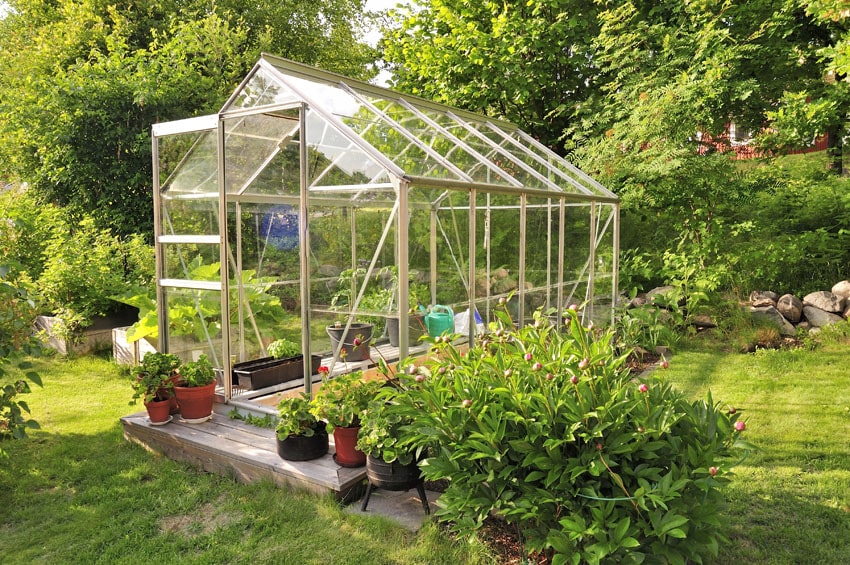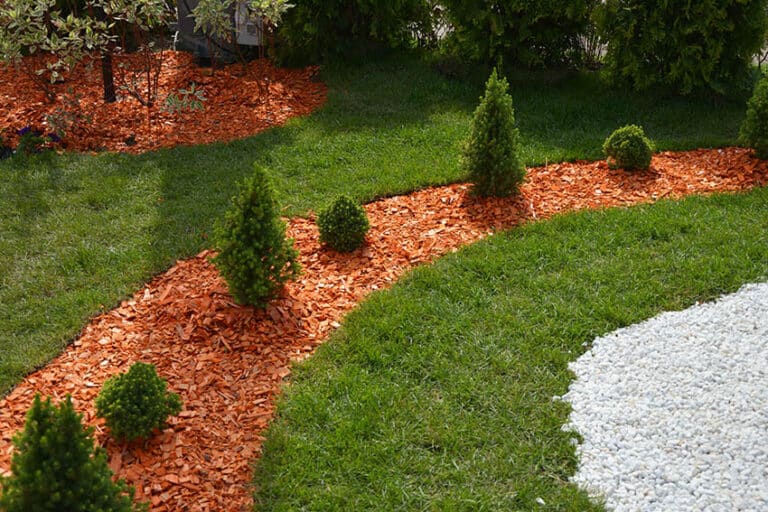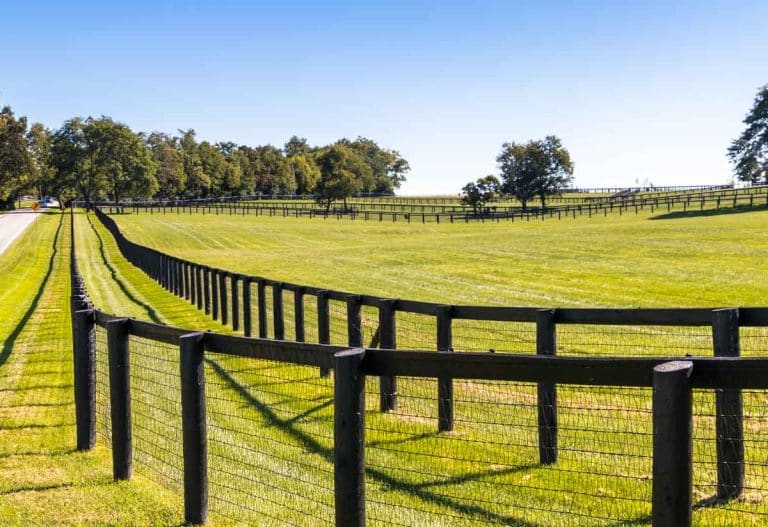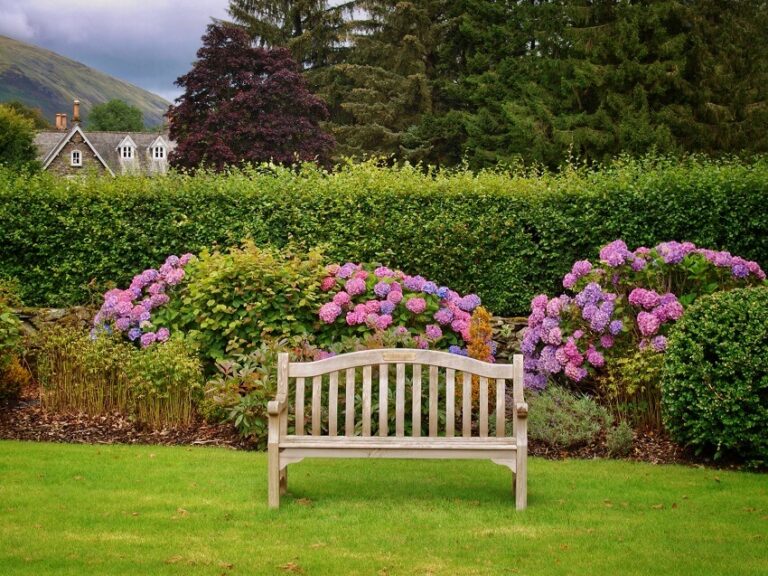How to Organize a Greenhouse For Best Use
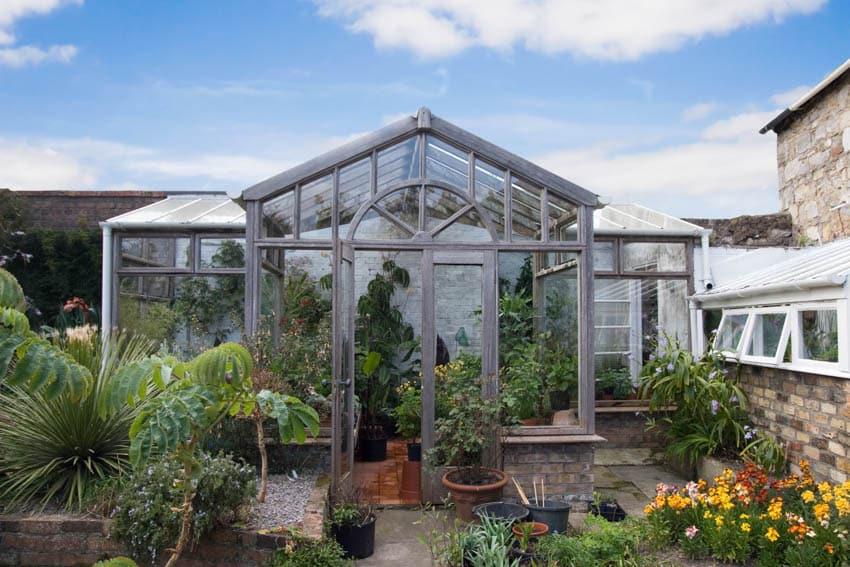
In a disorganized greenhouse, you wind up spending more time searching for the supplies you need and being frustrated at inefficiencies than you do gardening. Follow these tips on how to organize a greenhouse, making it a pleasant and productive place to spend time.
Divide The Greenhouse Into Zones
Spend a day in the greenhouse simply observing the sunlight. Some areas may be in direct sunlight all day, while other corners may get indirect light for most of the daylight hours. Some portions of the greenhouse may be shady. You can use tape to mark out the different areas, so you know exactly where to place plants according to their sun requirements.
Areas that are in full shade or are less desirable for plants should become dedicated storage areas for tools and supplies. Cluster hoses and watering cans around the water spigot for easy access. You’ll also want to establish a work area when thinking about how to organize a greenhouse. Ideally, it should be in a partially shaded area to keep you cool while you work.
Design Around The Potting Bench
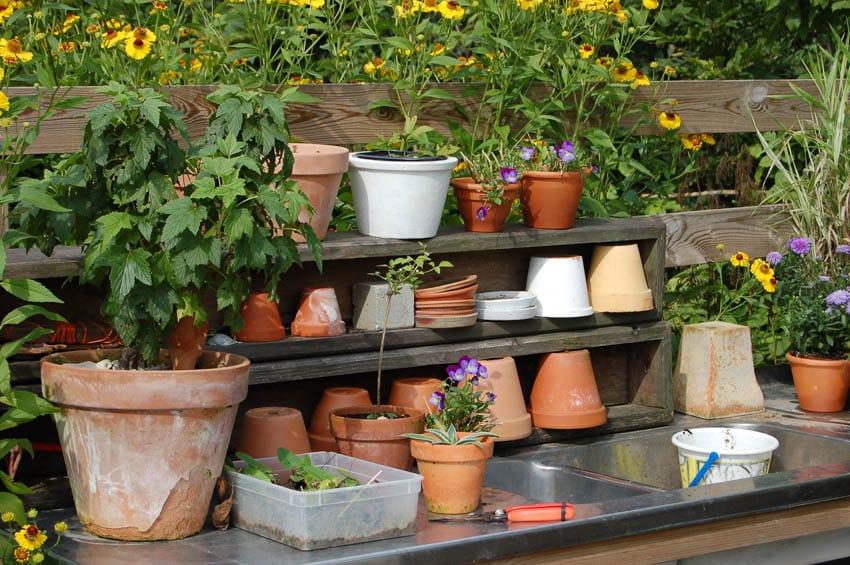
The potting bench is where you’ll spend most of your time in the greenhouse. It should be close to a water source and not too far from any of your frequently used supplies. Most gardeners prefer a counter height potting bench, where they can work on plants of various sizes without having to bend over.
You should not use your potting bench for permanent storage, as it reduces the amount of room you have to work and can make greenhouse tasks more frustrating. Instead, install shelves or utilize under bench storage solutions to make the most of your space when planning on how to organize a greenhouse.
Use Adjustable Shelving

Rather than mounting shelves permanently on the walls, consider storage options with adjustable shelves. Wire rack shelves usually have four posts with adjustable stoppers. By moving the stoppers up or down, you can easily customize the shelving to give tall plants enough space.
Be wary of storing large containers of soil on high shelves. Not only will they be difficult to get down without injuring yourself, but they may also block the sunlight from reaching your plants.
Use Under Bench Storage
The best place for tools, potting soils, pots, and other gardening supplies is under the potting bench. This shady area isn’t great for plant storage, but it’s perfect for having easy access to the things you use most frequently. Store occasionally used items toward the back of the bench, against the wall. Consider hanging your favorite tools from the sides or front edge of the potting bench for the easiest access.
You could also grab a set of plastic drawers to keep under your potting bench, and group similar items together. Using clear plastic will help you keep track of what’s inside the drawers. If you use opaque drawers, consider labeling the drawer with the contents in a large, easy-to-read font.
Stacking bins are another good option and, like drawers, will help keep your supplies safe from moisture and bug infestation. Read more about our guide on the different backyard greenhouse ideas here.
Use A Labeling System
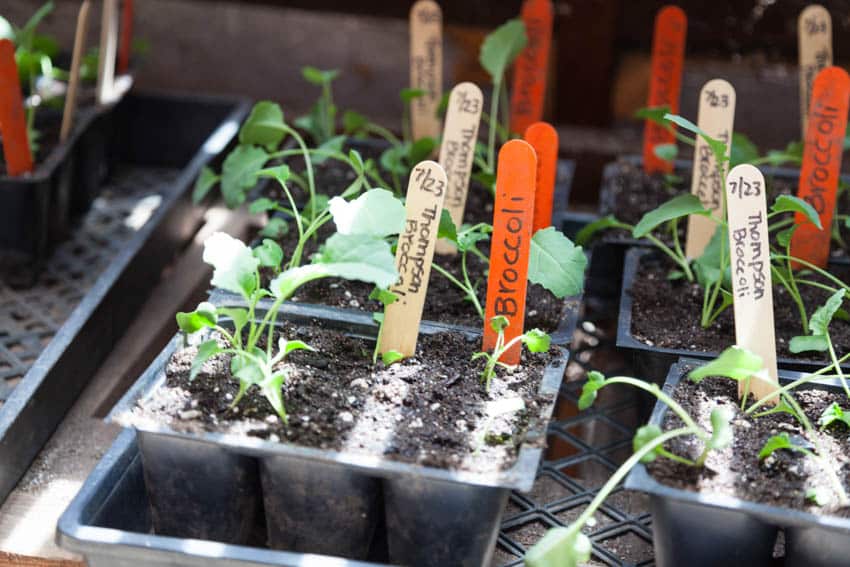
Not only should you label any containers you can’t see inside, make sure to label your plants! As plants grow, their appearance changes, which can make it difficult to remember exactly what you planted in those pots last week. Wooden paint stirrers are one of the simplest ways to label your plants. Use a permanent marker to write the name of the plant on the paint stirrer, and plunge it into the soil. This will help when thinking about how to organize a greenhouse.
For smaller pots, popsicle sticks are a great alternative. You can also purchase plant stakes at a garden supply center. Clothespins are another cheap and easy labeling solution. At minimum, the name of the plant should be visible. If you want to be even more organized, consider grabbing a sheet of circular stickers with several different colors.
Decide on a meaning for each color of sticker. It could refer to how much light the plant needs to thrive, or how frequently it should be watered. When you’re growing both edible and inedible plants, consider adding a symbol to your plant stake that indicates whether or not the plant is destined for the plate. This is especially effective at making sure you don’t accidentally apply something toxic to a plant you intend to eat.
Hang Hooks From The Ceiling

To get the most usable space out of a greenhouse with a small footprint, think about hanging hooks from the ceiling for plants in hanging baskets. Make sure you still have enough clearance to move around the greenhouse without knocking yourself out.
One In, One Out
Chances are, you’ll quickly fill your greenhouse with plants. It’s common for gardeners to think they have room to squeeze in just one more thing. While buying new plants may make you happy, a greenhouse that is stuffed to the gills is unpleasant and frustrating to work with, sapping the pleasure you get from this activity.
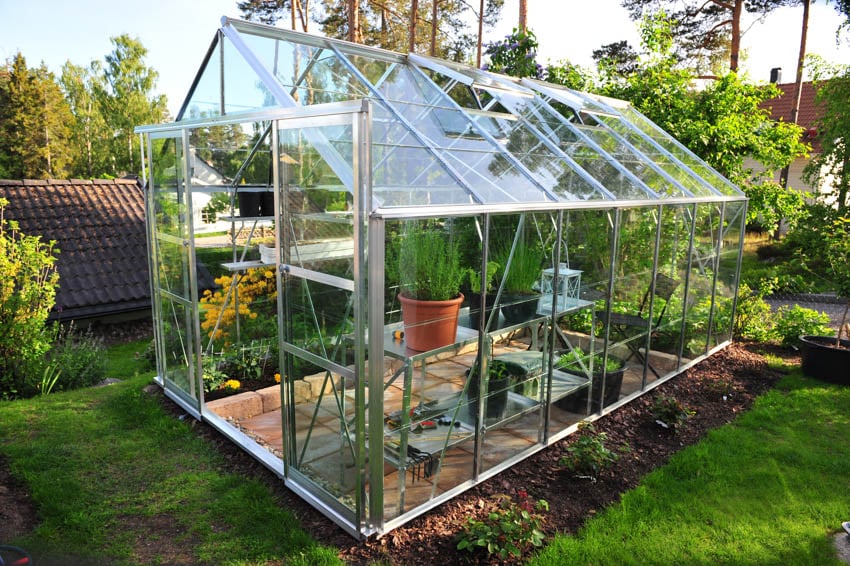
You should always have a bit of extra room to shift pots around for optimal placement. Once your greenhouse is starting to approach fullness, institute a ‘one in, one out’ rule. In other words, if you bring a new plant into the greenhouse, you need to find a new home for one of the existing inhabitants.
If you use your greenhouse to prepare seedlings for transfer into the ground, this cycle will happen naturally. If your greenhouse is the only planting space you have, consider bringing mature plants inside your home or giving them away to appreciative friends.
Host A Garden Swap
A fun way to connect with other gardeners is to have a plant and supply swap. Maybe you have a favorite plant pot size or shape and have accumulated a collection that is too large for you to reasonably work through. Or maybe you seeded more plants than you have space for, but can’t bear to throw them away. Connect with other gardeners and choose a time and place to meet.
Everyone should bring their extra supplies and plants and lay them out on the ground. Then each person takes away only the supplies they want. Donate the remaining supplies to a community garden. See more related content at our article about the best vertical garden ideas on this page.

